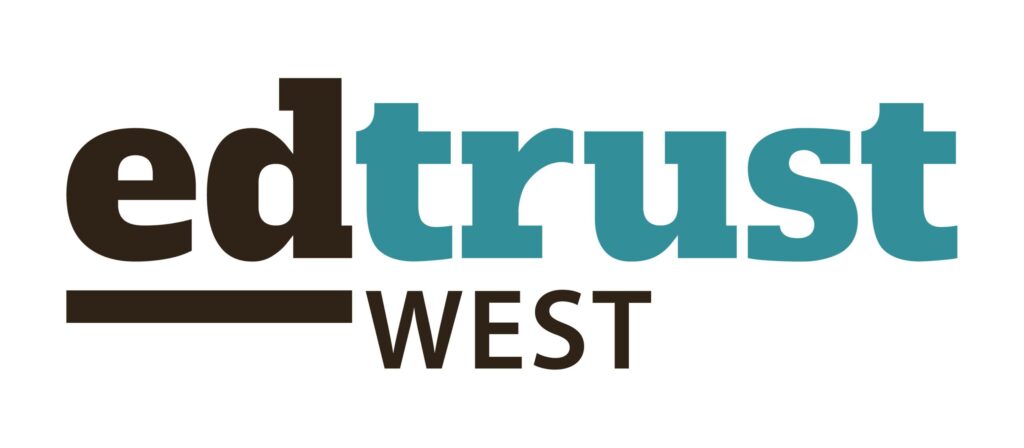In January 2021, Governor Newsom put forth a budget proposal that would ensure all high school seniors complete a Free Application for Federal Student Aid (FAFSA) or California Dream Act Application (CADAA), if passed.
Below is a list of frequently asked questions about the proposal:
What is the Governor's proposal?
The Governor’s Proposal on LEA confirmation calls for LEAs (i.e., school districts, county offices of education, or charter schools) to ensure that their seniors either complete and submit the FAFSA or CADAA beginning in the 2021-22 academic year, or opt-out of doing so. In brief, this proposal:
- Defines pupils and LEAs;
- Sets the start date as 2021-22 school year, and says LEA governing boards must confirm either:
- Students complete the FAFSA or CADAA;
- Parents or emancipated students complete a written opt-out, or;
- LEAs complete an extenuating circumstance waiver.
- Designates LEAs to connect parents and students with services or programs run by the California Student Aid Commission (CSAC) to help them complete forms;
- Ensures that any information shared in compliance with this proposal abides by state and federal privacy laws;
- Confirms LEAs have discretion on implementation;
- Declares this activity, if approved by the Commission on State Mandates, is a reimbursable mandate for LEAs.
Why is this needed
Well over half of California’s K-12 students are low-income. In the last two years in our state, nearly a half million high school seniors did not complete a FAFSA or CADAA, leaving an estimated $550 million in state and federal financial aid on the table. The COVID-19 pandemic has further disrupted application completion rates for many high school and college students, preventing them from being eligible to receive financial aid for college. The Governor’s Proposed Budget highlights that California has seen a decline of about 10 percent and 45 percent in first-time freshman FAFSA and CADAA completion rates, respectively.
College affordability is a significant barrier facing low-income students in California as they pursue or consider pursuing a postsecondary education or credential. Currently, California has numerous campaigns and programs aimed at increasing FAFSA and CADAA completion rates. Yet, there is no existing law that calls on LEAs to ensure that their seniors are completing and submitting the FAFSA or CADAA. Without this critical oversight, financial aid application rates are still alarmingly low. In order to recover from this education equity crisis, California needs a laser-like focus on swiftly increasing financial aid application rates. The Governor’s Budget proposal is the final checkpoint for maximizing all of the financial aid expansion programs and initiatives in California that can increase low-income students’ access to the in-depth support needed to complete these forms.
Is the Governer's proposal a graduation requirement?
No, high school seniors will not be required to complete a FAFSA or CADAA in order to graduate. Instead, the proposal would confirm that LEAs encourage students to complete and submit the FAFSA or CADAA, with an option to opt-out, while also allowing LEAs to decide the best way to get this done. This being said, a local LEA board can decide to make this a graduation requirement at their discretion, but this proposal doesn’t mandate this action.
Wasn't there a bill passed last year requiring FAFSA completion?
No, last year ETW sponsored Assembly Bill 1617 (AB 1617), a bill authored by Assemblywoman Eloise G. Reyes, which did not pass. The bill focused on making financial aid application completion a high school graduation requirement, with waivers for students who did not wish to fill out a FAFSA or CADAA.
How does the Governor's proposal on LEA confirmation differ from a graduation requirement?
Making this an LEA confirmation puts the ownership and responsibility on school districts, county offices of education, and charter schools to do all they can to ensure their students and families know about and apply for financial aid. The proposal’s language outlines that, to get this done, LEAs can direct students and families to services provided by CSAC. A graduation requirement would put the onus on students and their families to complete a FAFSA or CADAA, with support from their school districts, county offices of education, or charter schools being essentially optional. Ultimately, the Governor’s proposal is about creating a college-going culture and restructuring these systems to center families’ and students’ needs.
What does the proposal say about students who do not want to fill out a financial aid application?
There are two opt-out options for students/parents and LEAs:
- A parent, a legal guardian, legally emancipated student, or student who is 18 years old or older may opt-out through a written request to their LEA.
- An LEA can flag an “extenuating circumstance” for a student who cannot complete this requirement and thus opt-them out. Extenuating circumstances may include military plans, religious reasons, entering the workforce, etc.
Would this proposal impact students from low-income communities and underserved students of color negatively?
No, this policy is about closing equity gaps. During the ongoing pandemic, declines in California FAFSA completion have been greater in communities that are lower-income or have more Black and Latinx individuals. Currently, students who would benefit the most from financial aid are the least likely to apply. This proposal would make it easier for students who wish to attend college to apply for financial aid and receive support to complete the application, while making sure there are avenues for students to opt-out.
How are undocumented students’ privacy concerns being addressed?
First, the proposal outlines that all information shared by parents, legal guardians, and students for this purpose shall be handled according to applicable state and federal privacy laws and regulations. Second, schools are a trusted community space where parents and students can be assured that their personal information is safe – this has been reinforced by state laws such as SB 54 (DeLeon, 2017) and AB 699 (O’Donnell, 2017). Lastly, AB 540 and the California Dream Act also include privacy protections from keeping immigration status and other sensitive information from the federal government.
Are there any consequences for students or LEAs for lack of FAFSA/CADAA completion?
There are no consequences for students or LEAs for lack of completion. The proposal aims to encourage and better systematize financial aid application completion into everyday school culture.
Will the proposal create costs for LEAs?
This is a possibility, but the Governor does include a suggested funding mechanism to offset and reimburse LEAs for any activities dictated by this proposal. LEAs can be reimbursed for the cost of activities associated with the proposal if the Commission on State Mandates determines that the proposal creates a state-imposed requirement to spend funding. The ultimate goal is to make it easier for students to receive support when completing these financial aid forms, create a college-going culture, and provide our school districts, county offices of education, and charter schools with funding to improve their support infrastructure.
Will there be funding provided to help LEAs?
While there is no upfront funding allocated for this activity, the proposal includes a proposed funding source. The trailer bill language says, if the Commission on State Mandates determines that the proposal contains costs mandated by the state, LEAs will be reimbursed by the state according to the statutory provisions.
Are there LEAs already doing this without new funding from the state?
Yes, Val Verde Unified School District, Perris-Union High School District, and Riverside County Office of Education have been ensuring FAFSA/CADAA completion without any new funding from the state. If the Governor’s proposal becomes a mandate, LEAs including Val Verde Unified School District and Perris Union High School District will have an opportunity to be reimbursed via the Mandate Block Grant for the costs of any FAFSA/CADAA completion activities they are hosting.
Are there any California LEAs currently ensuring that their seniors are completing and submitting the FAFSA or CADAA?
Yes, two school districts in California, Val Verde Unified School District and Perris-Union High School District, have enacted a FAFSA/CADAA completion policy change and have seen significant positive results. Val Verde Unified School District has increased FAFSA/CADAA completion by 14 percentage points, from 69 to 83 percent in the first year alone, with no negative impact on high school graduation rates. In fact, a school in the district, Rancho Verde High School, had one of the highest percentages of FAFSA/CADAA completion in California at 96 percent last year. Aside from these two districts, we know there are numerous schools and
districts who have not passed a specific policy but are achieving high completion rates through their own methods. These schools include winners of the
Race to Submit Leaderboard in 2019-20.
Have any other states done this?
Yes. Across the nation, Louisiana, Texas, Indiana, Illinois, Tennessee, and Washington D.C. have done this or something similar. Louisiana established its FAFSA completion policy in 2017-18. In the first year of implementation, FAFSA completion rates increased by 26 percentage points to an overall completion rate of over 77 percent. They quickly became the state with the highest FAFSA completion rates in the nation. It was the largest year-over-year percentage change in FAFSA completion of any state.
Who will ensure LEAs receive support?
CSAC leads a handful of activities and programs to support financial aid application completion throughout the state (i.e., Cash for College workshops, the California Student Opportunity and Access Program (Cal-SOAP), and maintaining the Race to Submit dashboard). They also provide professional development trainings (live and recorded) for counselors and administrators. These trainings walk attendees through how to use their WebGrants system, a data system used to track students’ completion rates and identify non-completers. Additionally, there are countless community-based organizations, college-readiness programs, and local community colleges in various regions across the state that team up with LEAs and CSAC to lead this type of work (through Cal-SOAP or independently). CSAC is one piece of the puzzle – it will take the whole education community to make sure students can afford a college education. It takes all of us to go all in for financial aid.


